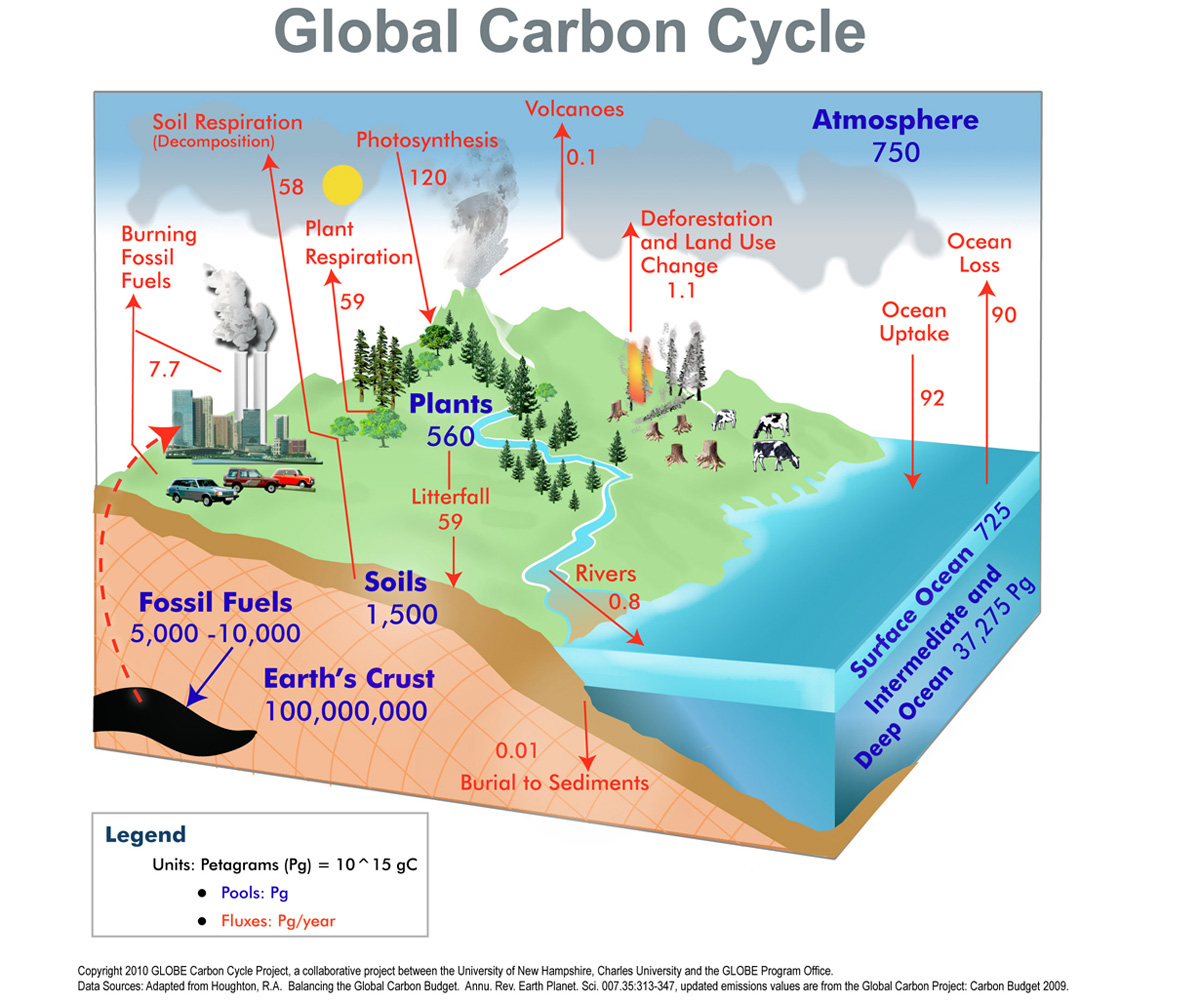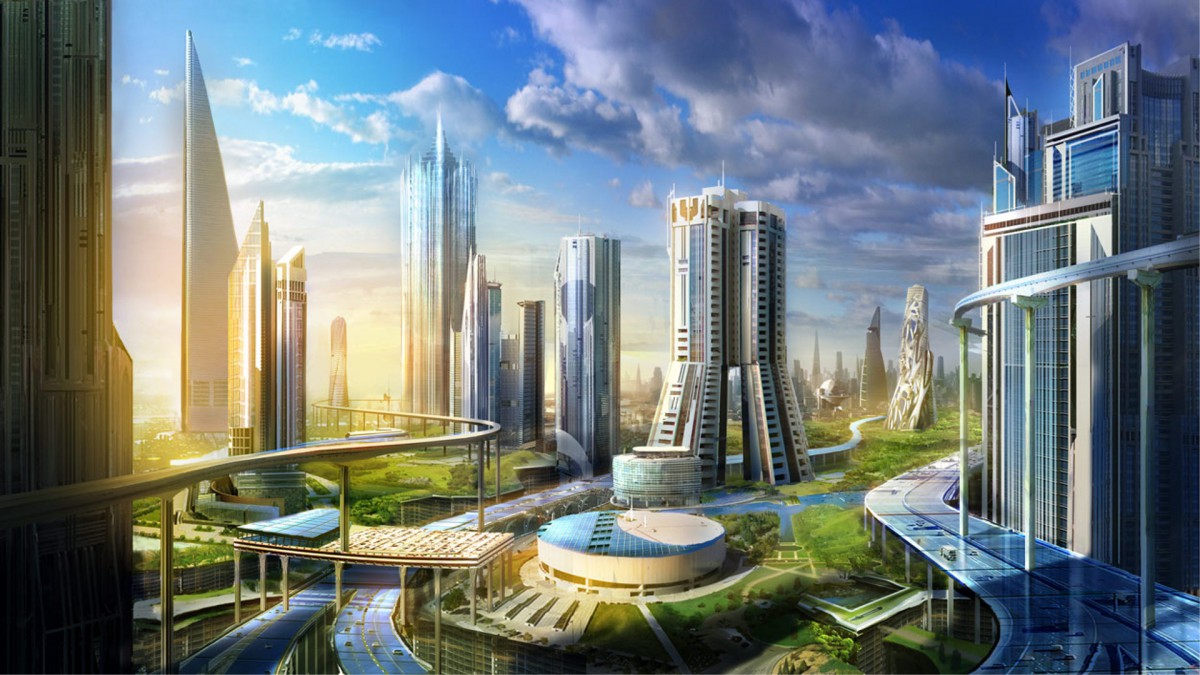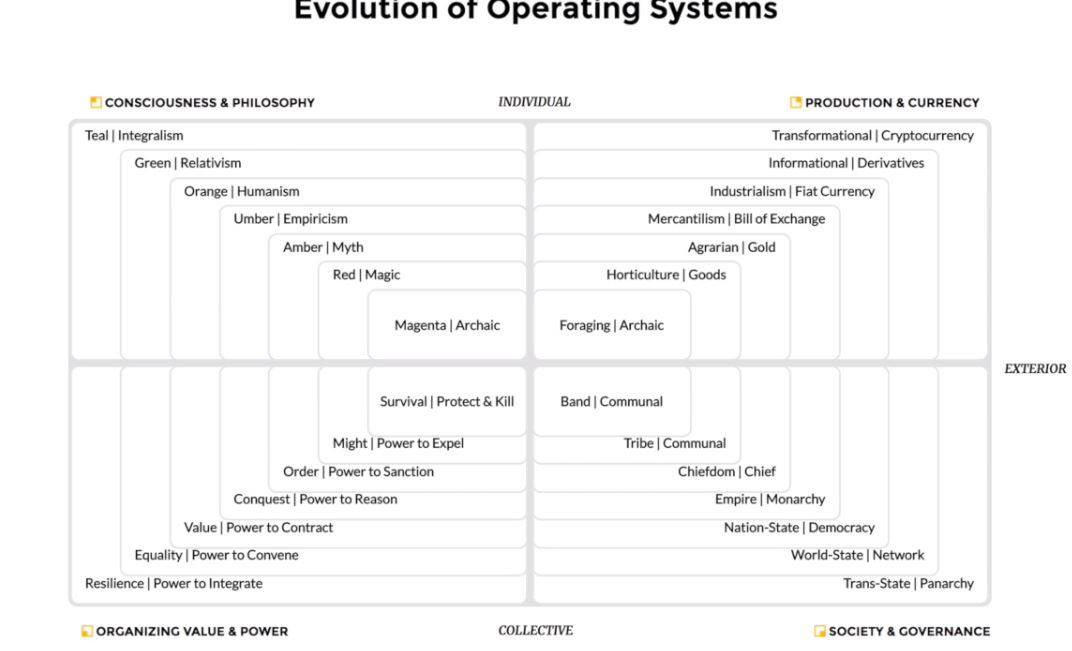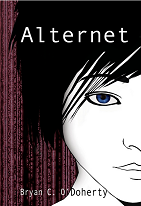In my first post on Integral Economics, I looked at what a coherent Integral Economic theory should include and how such a theory could usefully describe the economic motivators and systems for societies and communities at each stage/wave of development. In this post I want to focus on the Economics of the Integral Wave itself and explore what we might expect from an Integral School of Economics.
I’ve previously called the economics of the Yellow/Teal wave “Wisdom Economics” and I think this is a fitting title. Recapping my description of Wisdom Economics in that post;
“In the Life Conditions of Yellow, multiple perspectives and realities can be held simultaneously. The greatest good, becomes a conditional. One size does not fit all. Solutions to problems must be flexible and organic, natural and functionally fit for the vMeme in question. Wealth in knowledge and wisdom become priorities over material possessions. The Economics of Yellow are driven by functional fit. Integrated meshworks of diverse and varied economic modalities coexist in a Panarchic Integral Agora where order tetra-arises out of the chaos of billions of daily economic transactions of all types along all quadrants, and all lines.”
So OK, what does this mean in practice? What it means is that for the first time, at Integral, one is capable of discerning the different value systems that drive economics at each stage/wave and both the positive and negative externalities each of those values entail. In our modern world the economy is primarily driven by ORANGE (Modern) and GREEN (Postmodern) economic value systems. But all value systems come into play and have an impact on our lives. Comprehending that –why that is and what factors point to it and what it means for society as a whole — is important for an Integral Understanding of the current state of the economy.
More importantly, however, an Integral understanding of economics is a powerful tool we can use to predict what future economies might look like, how they might function, and how they might transform our lives and the environment as a whole. Key to that understanding is the AQAL model of economics I presented in my previous essay. While most first tier economic schools of thought capture one, or at most two, quadrants of the Economic line of AQAL, there is currently no mainstream economic theory that integrates all four quadrants. And that is exactly what will be necessary in order to develop a 2nd tier Economic School.

- Upper Left, Individual Interior = “What I Will.” Praxeological Economic philosophy, and Behavioral Economics. Economic Psychology.
- Upper Right, Individual Exterior = “What I do.” Praxeological Economic Philosophy and Behavioral Economics. Orthodox and Heterodox theories of Microeconomics.
- Lower Left, Collective Interior = “What ought to be.” Normative Economic philosophy. Marxist, Socialist, Anarchist, Feminist, and many other Economic philosophies.
- Lower Right, Collective Exterior = “What is.” Positive Economic philosophy. Neoclassical and Orthodox theories of Macroeconomics
Over the course of the Modern and Postmodern ages various schools of Economic thought have ascended and diminished in popularity among scholars. Invariably these schools of economics all fall victim to the limitations of their own vMeme lens. Though they may try, and occasionally get close, by synthesizing two or more Quadrants of our “Economic AQAL” what they ultimately miss is the developmental part of the equation. They describe their own layer of the developmental onion, and miss all the other layers, beneath and above them, that are acting in their economies. Thus their theories don’t quite ever pan out in reality.
No matter what “School” of economics one studies, it is almost certain to make assumptions about a given economy based upon the worldview lens of the economists from which the theory is derived. Therefore it is no wonder that economic theory changes with the same rapidity and variety as any of the social sciences and humanities. At the same time economics does tend to follow certain patterns of statistical predictability in-so-far as the economic theory being tested matches the social vMeme of the economy in question. This aspect of economics can encourage the “orthodox” or mainstream economists toward an overly materialist or positivist approach to economics, and away from the equally valid and useful philosophical approaches.
When we think of economics, we commonly think of it in modern terms as the exchange of goods and services, or in some cases even just monetary exchange. However historically, and especially in a integral developmental context, economics is the study of ALL human exchange. Exchange of material goods and services certainly, but also the exchange of social relationships, of reputation, of loyalty and rank, the exchange of data, knowledge, and information, of wisdom, of emotional energy, of spiritual vibration and so on. Such modes of exchange are more or less visible or understood at different levels of consciousness development, but they are all there. Each level of development, each vMeme has different – in some cases radically different – relationships with these various modes of exchange.
The key insights that an integral approach to economics can provide are in understanding the main economic motivators of each stage/wave, and therefore understanding the types of exchanges that each stage/wave favors. The ability to understand that while for the ORANGE stage the production and accumulation of income producing Capital Assets is a major motivator, for GREEN it is the equitable use and division of those assets and the income they produce that is the primary economic motivator. Both are concerned primarily with Material Exchange, but in very different ways. For the Integral, YELLOW/Teal wave, concerns about material exchange are less of a motivator than the exchange of Information, Knowledge and Wisdom which are the primary economic motivators of Integral consciousness. Developmentally if we ask the question: What is real wealth? We might see something like this:
Developmental Economic Motivators
| Stage/Wave | What is Wealth? | Motivator |
| Beige (Archaic) | Abundance of Food, Warmth and Shelter | Survival |
| Violet (Tribal) | Abundance of Acceptance, Inclusion | Belonging |
| Red (Mythic) | Great Renown, Reputation, Influence | Power |
| Blue/Amber (Traditional) | High Social Rank or Position | Rank |
| Orange (Modern) | Abundance of Assets, Better Technology | Material |
| Green (Postmodern) | Equitable Distribution of Material Wealth | Fairness |
| Yellow/Teal (Integral) | Abundance of Knowledge and Information | Integration |
| Turquoise (Experiential) | Abundance of Experience, Relationships | Agape |
| Coral/Indigo (Unitive) | Abundance of Wisdom | Oneness |
It is important to remember also that we all include within our economic lives most of these concepts and motivators. For example, no matter how developed our consciousness may be we still need food, warmth and shelter, still crave acceptance and inclusion, still value reputation and influence, still seek rank and position in our fields, still require material wealth to provide for our lifestyles. These needs are all holarchically nested, but as our developmental center of gravity shifts up the spiral the needs which we prioritize (and in the we-space the needs our cultures and societies prioritize) shifts.
How is this useful? Well for one thing it explains a whole lot about the economic territory as to why certain individuals, cultures and societies manifest certain economic outcomes. For example if an individual or cultural/social group is at COG Red/Amber; their economic priorities are going to be toward achieving renown, reputation, influence, rank or position within their respective social unit, and will have very little if any priority for gaining lasting Material Wealth (except as a signal of the former priorities). Better to have flashy cars and fancy clothes (in the case of Red), than to accumulate appreciating assets that will provide a healthy ROI. Better to be of good social stock, of a good family, of the right race or class/caste or nation of people (Blue/Amber), than to worry about equity or fairness.
Not until Orange COG comes on line do we see Material Wealth; specifically the accumulation and abundance of assets that themselves can be used to produce material wealth, as being the primary economic motivator. That primary motivator creates the striving for productivity, efficiency and industry that typify the modern age. Indeed the entire study of Economics as its own subject came about fundamentally from the modern desire to maximize productivity, efficiency and industry! Is it no wonder that most economic thought is based in Modern Orange COG terms?
And how beautiful that it is so! Because the truth of the mater is that the higher stages/waves of development rely heavily upon the foundation of material super-abundance generated by the Modern stage – without which Green would have no wealth to distribute equitably, Yellow/Teal would not have the freedom to study, accumulate, integrate and disseminate all the many forms of kosmic knowledge, and so on up the spiral. The Kosmos could not possibly support the weight of 10 billion Unitive consciousnesses, without the maximal technological and material super-abundance that Orange consciousness can bring to the economic table. Orange, therefore is a sort of fulcrum point in Integral Economics, allowing us to leverage the satisfaction of both our premodern physical and social needs and priorities as well as our post modern existential and metaphysical needs and priorities.
In conclusion, an Integral School of Economics is one which integrates the praxeological I/It quadrants, and the normative and positive We/It’s quadrants, along with the developmental priorities/motivators of each stage/wave to come to a fuller understanding of the economic landscape of the kosmos. Such a school of economic thought and philosophy could have tremendous explanatory and predictive power in today’s society. By providing the tools to understand the developmental, social, cultural, and psychological patterns that motivate economic actors and agents, Integral Economics provides insights that could transcend and include the various, often seemingly irreconcilable, economic philosophies, from Marx to Mises and everything in between, into an Integrated Whole. Such an Economic school would fit well within the Integral Panarchic society I have envisioned in past essays. Indeed the establishment of such an Integral School of Economics would do much to pave the way for the evolution of such a future society. I only hope to see it happen in my lifetime!












 In thinking about Integral Politics we must not let our own biases confuse us into mistaking the axis of Health and Pathology, for the axis of Agency and Communion. All too often in political debates I see people (some, not all) usually with either a strong bias toward agency or communion either ascribe pathology to the other, or claim the other to be coming from a lower holarchical worldview. And while it is possible either might be the case, I think that often it is not, and what you have are two genuine people, who both want the best for humanity, simply unable to inhabit the other’s native bias.
In thinking about Integral Politics we must not let our own biases confuse us into mistaking the axis of Health and Pathology, for the axis of Agency and Communion. All too often in political debates I see people (some, not all) usually with either a strong bias toward agency or communion either ascribe pathology to the other, or claim the other to be coming from a lower holarchical worldview. And while it is possible either might be the case, I think that often it is not, and what you have are two genuine people, who both want the best for humanity, simply unable to inhabit the other’s native bias.

 Robb Smith’s keynote address at the recent What NOW conference;
Robb Smith’s keynote address at the recent What NOW conference; 

